标签:
课程:Java程序设计 班级: 1351
姓名:王玮怡 学号:20135116
成绩: 指导教师:娄嘉鹏 实验日期:2015.06.03
实验密级: 预习程度: 实验时间:14:00~20:00
仪器组次: 必修/选修:选修 实验序号:3
实验名称:敏捷开发与XP实践
实验目的与要求:
1.没有Linux基础的同学建议先学习《Linux基础入门(新版)》《Vim编辑器》 课程
2.完成实验、撰写实验报告,实验报告以博客方式发表在博客园,注意实验报告重点是运行结果,遇到的问题(工具查找,安装,使用,程序的编辑,调试,运行等)、解决办法(空洞的方法如“查网络”、“问同学”、“看书”等一律得0分)以及分析(从中可以得到什么启示,有什么收获,教训等)。报告可以参考范飞龙老师的指导
3. 严禁抄袭,有该行为者实验成绩归零,并附加其他惩罚措施。
实验仪器:
|
名称 |
型号 |
数量 |
|
PC |
|
1 |
|
虚拟机 |
实验楼 |
1 |
一、实验内容:
1. XP基础
2. XP核心实践
3. 相关工具
二、实验过程:
(一)敏捷开发与XP
软件=程序+软件工程
软件企业=软件+商业模式
敏捷开发(Agile Development)是一种以人为核心、迭代、循序渐进的开发方法。“敏捷流程”是一系列价值观和方法论的集合。
XP软件开发是什么样的通过 XP准则来表达:
一项实践在XP环境中成功使用的依据通过XP的法则呈现,包括:快速反馈、假设简单性、递增更改、提倡更改、优质工作。
XP软件开发的基石是XP的活动,包括:编码、测试、倾听、设计。
(二)编码标准
在虚拟机中的eclipse输入如下代码:

此代码由于没有基本的缩进,因此看不出层次。
单击Eclipse菜单中的source->Format 或用快捷键Ctrl+Shift+F就可以按Eclipse规定的规范缩进,效果如下:

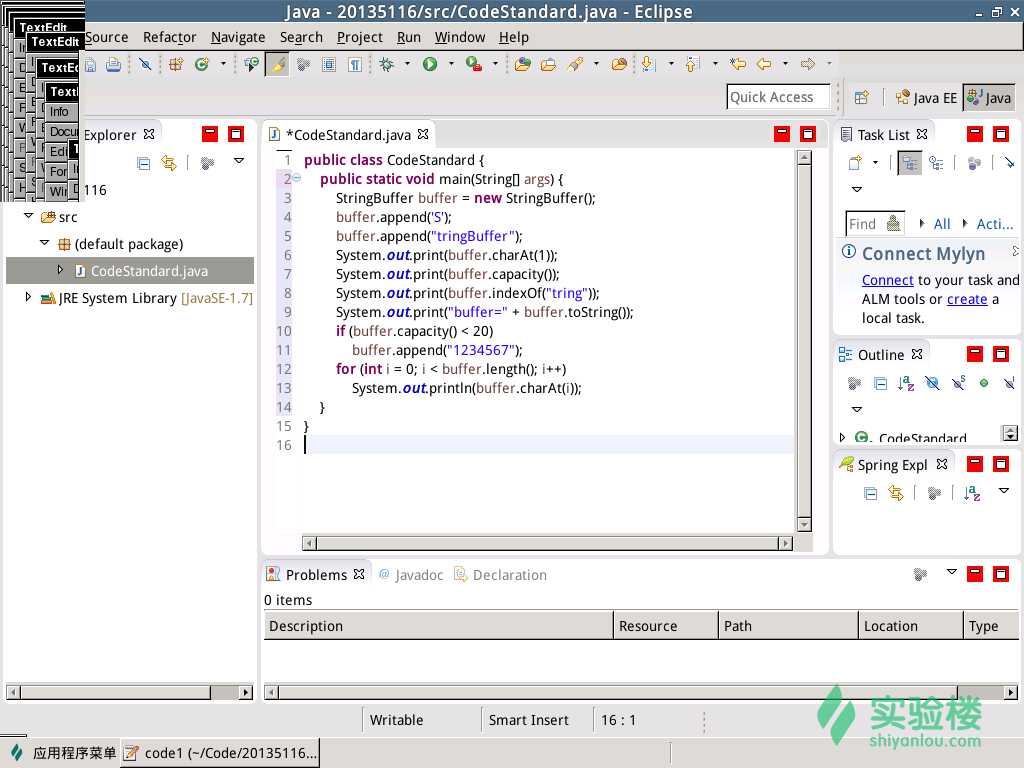
Java中的一般的命名规则有:
(三)结对编程
结对编程是XP中的重要实践。在结对编程模式下,一对程序员肩并肩、平等地、互补地进行开发工作。他们并排坐在一台电脑前,面对同一个显示器,使用同一个键盘、同一个鼠标一起工作。他们一起分析,一起设计,一起写测试用例,一起编码,一起做单元测试,一起做集成测试,一起写文档等。
(四)版本控制
借由在不同的结对中工作,所有的程序员都能看到完全的代码。集体所有制的一个主要优势是提升了开发程序的速度,因为一旦代码中出现错误,任何程序员都能修正它。 这意味着代码要放到一个大家都能方便获取的地方,我们叫代码仓库。在此次试验中,我也开通了自己的代码库。我的代码库链接为http://git.shiyanlou.com/20135116
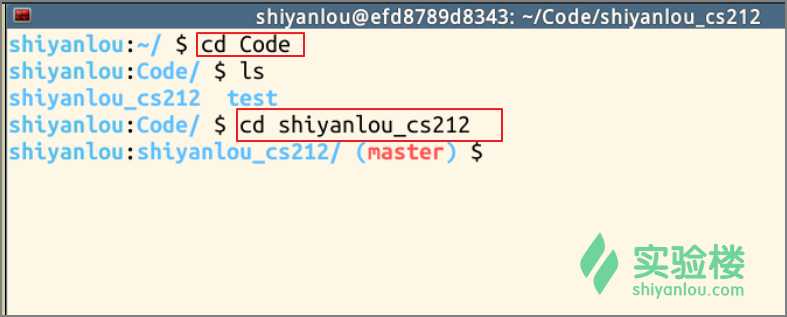
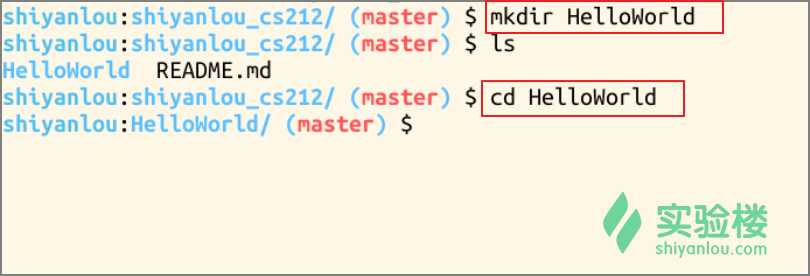

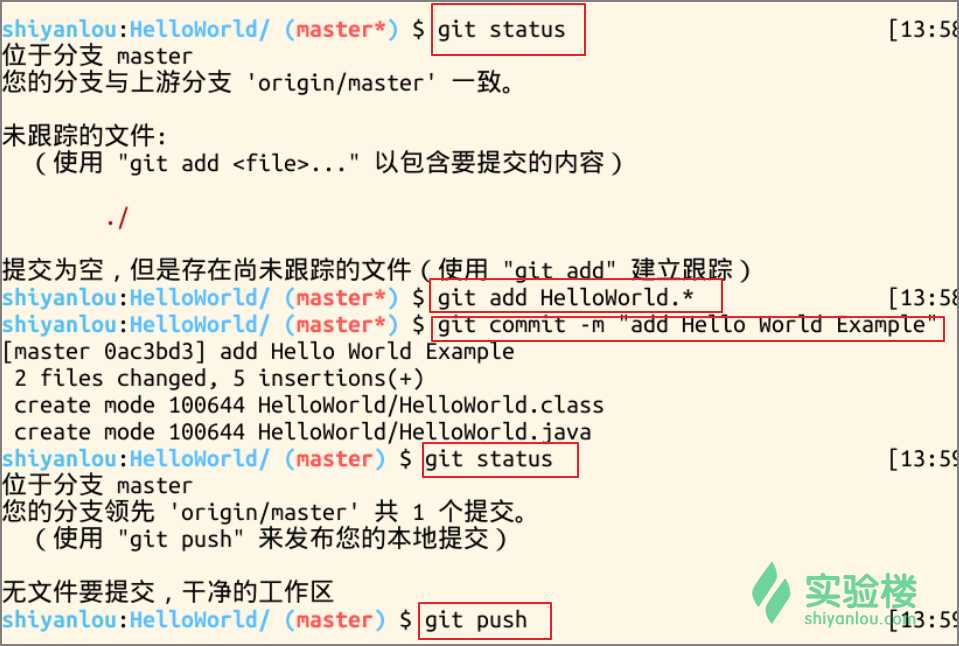
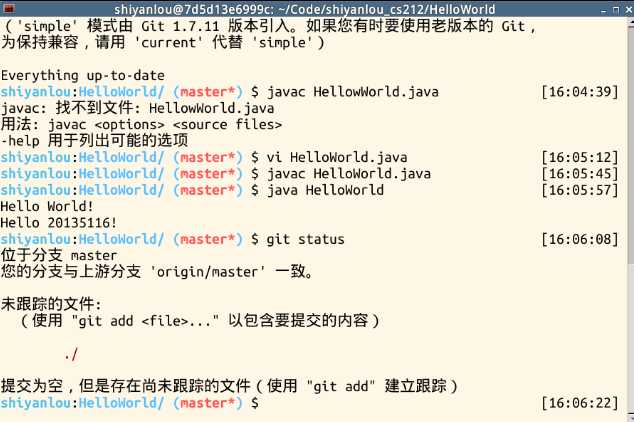
(五)重构
我们先看看重构的概念:
重构(Refactor),就是在不改变软件外部行为的基础上,改变软件内部的结构,使其更加易于阅读、易于维护和易于变更 。
举例如下:
1.使用重构修改名称:
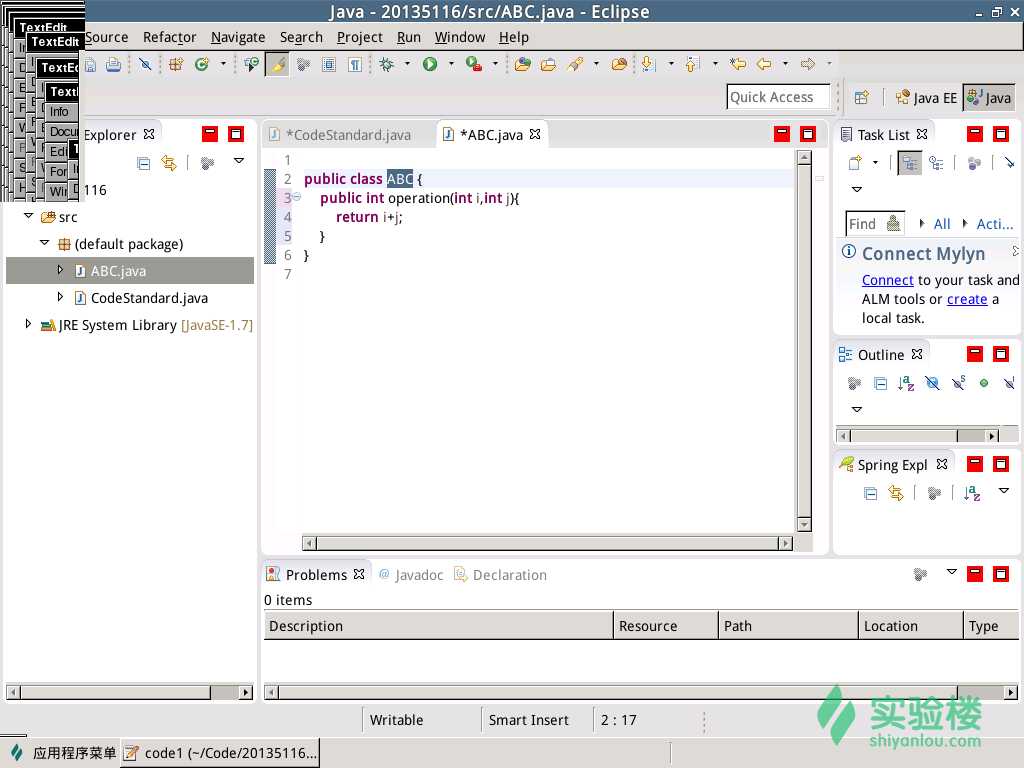
修改方法是,用鼠标单击要改的名字,选择Eclipse中菜单中的Refactor->Rename...:效果如下:
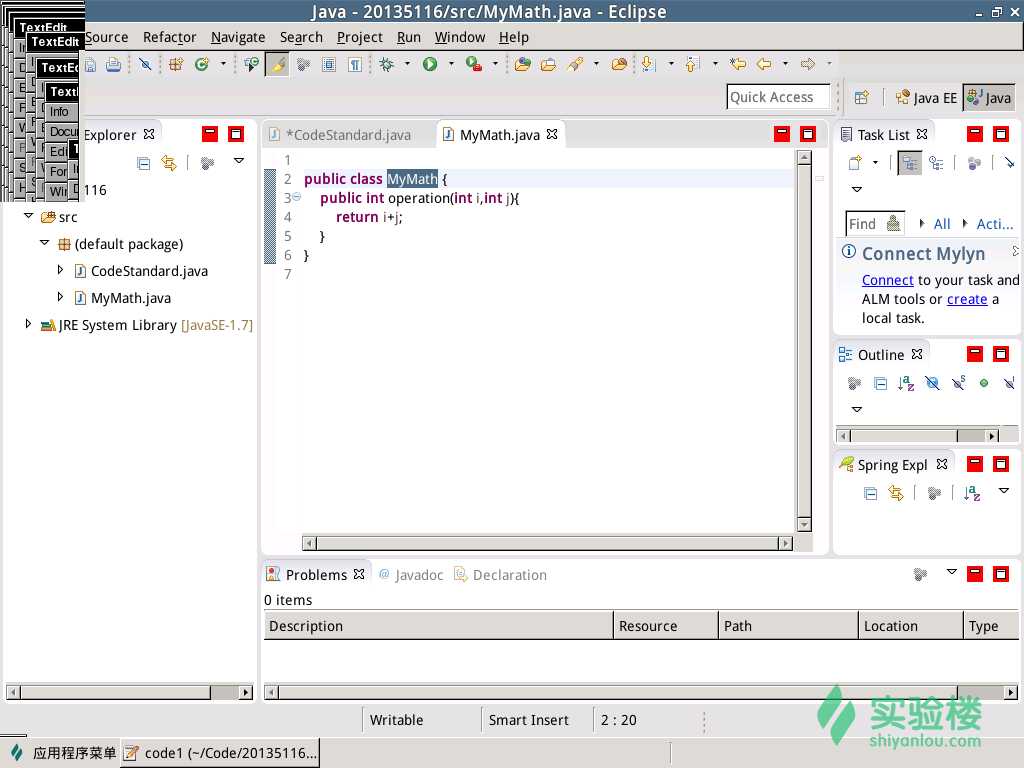

2.使用重构进行封装:
基本代码如下:
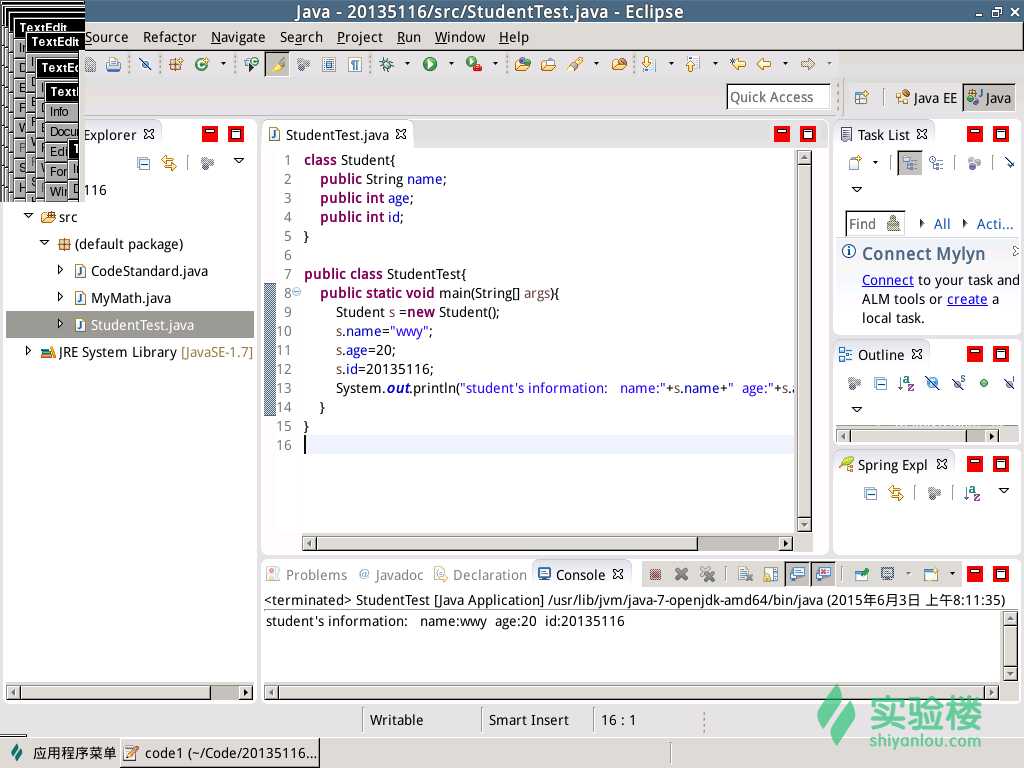
使用Eclipse中菜单中的Refactor->Encapsulate Field...,对name,age,id进行封装,效果如下:
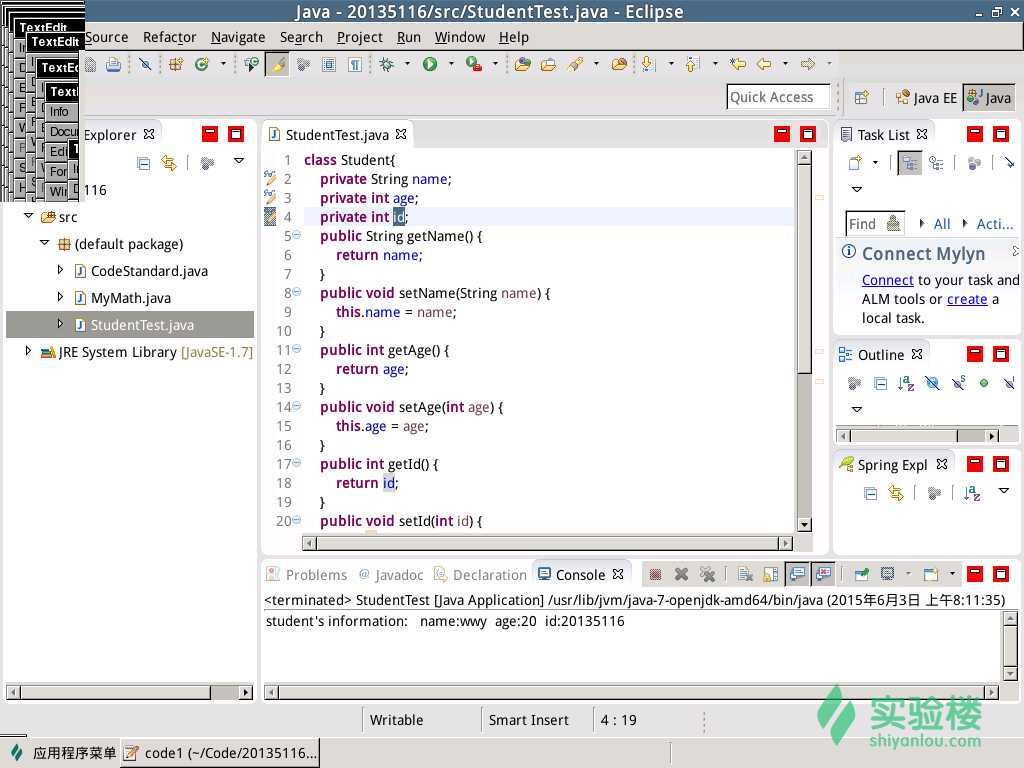
使用Eclipse中Source->Generate toString()... 给Student类产生一个toString方法
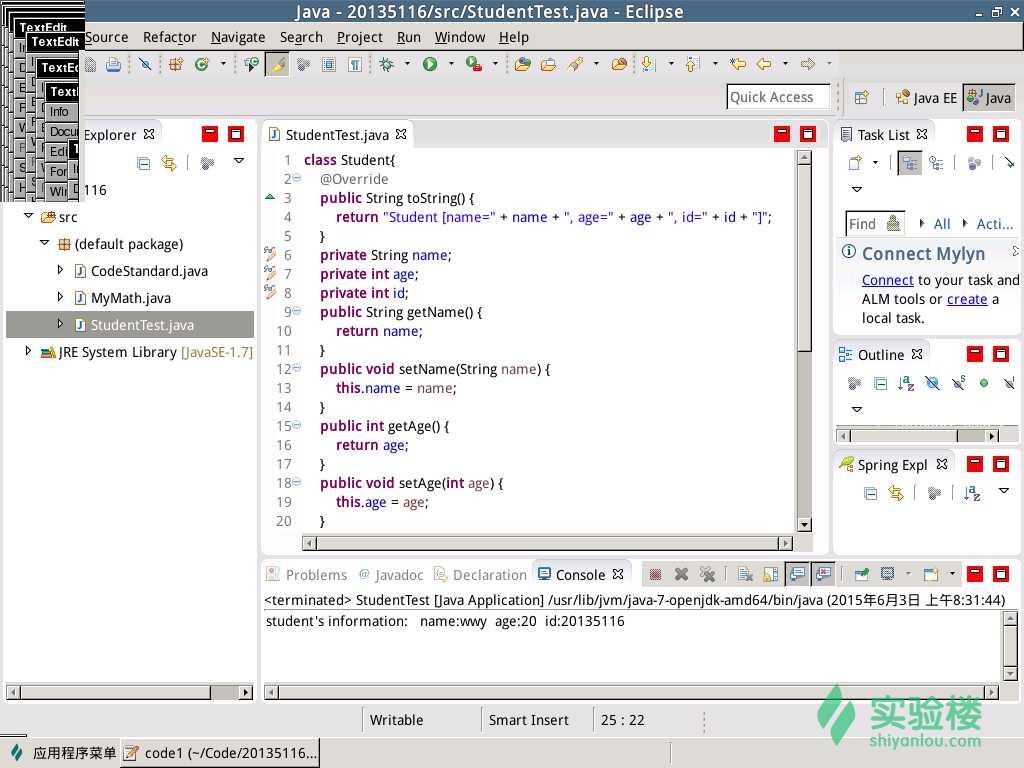
并修改main中代码:
System.out.println(s.toString());
3.关于修改代码:
臭味行列中首当其冲的就是Duplicated Code(重复的代码)。如果你在一个以上的地点看到相同的程序结构,那么当可肯定:设法将它们合而为一,程序会变得更好。
4.重构的完整流程包括:
往代码库中Check in code
(六)实践项目
1.项目简介:编辑一个简单的连连看游戏。
需要实现(1)一个6行*5列的主面板,显示参与游戏的数;(2)根据玩家所选择的两个数,进行判断,这两个数是否一致,若一致则消去,否则不变,直至所有数全部消除,游戏即为结束;(3)当玩家找不到一样的数时,可以使用“重列”按钮对当前游戏进行重新排列;(4)当玩家选择“再来一局”按钮时,游戏重新开始;(5)当玩家选择“退出”按钮时,游戏结束。
2.游戏代码如下:
package lianliankan;
import javax.swing.*;
import java.awt.*;
import java.awt.event.*;
public class lianliankan implements ActionListener {
JFrame mainFrame; // 主面板
Container thisContainer;
JPanel centerPanel, southPanel, northPanel; // 子面板
JButton diamondsButton[][] = new JButton[6][5];// 游戏按钮数组
JButton exitButton, resetButton, newlyButton; // 退出,重列,重新开始按钮
JLabel fractionLable = new JLabel("0"); // 分数标签
JButton firstButton, secondButton; // 分别记录两次被选中的按钮
int grid[][] = new int[8][7];// 储存游戏按钮位置
static boolean pressInformation = false; // 判断是否有按钮被选中
int x0 = 0, y0 = 0, x = 0, y = 0, fristMsg = 0, secondMsg = 0, validateLV; // 游戏按钮的位置坐标
int i, j, k, n;// 消除方法控制
public void init() {
mainFrame = new JFrame("JKJ连连看");
thisContainer = mainFrame.getContentPane();
thisContainer.setLayout(new BorderLayout());
centerPanel = new JPanel();
southPanel = new JPanel();
northPanel = new JPanel();
thisContainer.add(centerPanel, "Center");
thisContainer.add(southPanel, "South");
thisContainer.add(northPanel, "North");
centerPanel.setLayout(new GridLayout(6, 5));
for (int cols = 0; cols < 6; cols++) {
for (int rows = 0; rows < 5; rows++) {
diamondsButton[cols][rows] = new JButton(
String.valueOf(grid[cols + 1][rows + 1]));
diamondsButton[cols][rows].addActionListener(this);
centerPanel.add(diamondsButton[cols][rows]);
}
}
exitButton = new JButton("退出");
exitButton.addActionListener(this);
resetButton = new JButton("重列");
resetButton.addActionListener(this);
newlyButton = new JButton("再来一局");
newlyButton.addActionListener(this);
southPanel.add(exitButton);
southPanel.add(resetButton);
southPanel.add(newlyButton);
fractionLable.setText(String.valueOf(Integer.parseInt(fractionLable
.getText())));
northPanel.add(fractionLable);
mainFrame.setBounds(280, 100, 500, 450);
mainFrame.setVisible(true);
}
public void randomBuild() {
int randoms, cols, rows;
for (int twins = 1; twins <= 15; twins++) {
randoms = (int) (Math.random() * 25 + 1);
for (int alike = 1; alike <= 2; alike++) {
cols = (int) (Math.random() * 6 + 1);
rows = (int) (Math.random() * 5 + 1);
while (grid[cols][rows] != 0) {
cols = (int) (Math.random() * 6 + 1);
rows = (int) (Math.random() * 5 + 1);
}
this.grid[cols][rows] = randoms;
}
}
}
public void fraction() {
fractionLable.setText(String.valueOf(Integer.parseInt(fractionLable
.getText()) + 100));
}
public void reload() {
int save[] = new int[30];
int n = 0, cols, rows;
int grid[][] = new int[8][7];
for (int i = 0; i <= 6; i++) {
for (int j = 0; j <= 5; j++) {
if (this.grid[i][j] != 0) {
save[n] = this.grid[i][j];
n++;
}
}
}
n = n - 1;
this.grid = grid;
while (n >= 0) {
cols = (int) (Math.random() * 6 + 1);
rows = (int) (Math.random() * 5 + 1);
while (grid[cols][rows] != 0) {
cols = (int) (Math.random() * 6 + 1);
rows = (int) (Math.random() * 5 + 1);
}
this.grid[cols][rows] = save[n];
n--;
}
mainFrame.setVisible(false);
pressInformation = false; // 这里一定要将按钮点击信息归为初始
init();
for (int i = 0; i < 6; i++) {
for (int j = 0; j < 5; j++) {
if (grid[i + 1][j + 1] == 0)
diamondsButton[i][j].setVisible(false);
}
}
}
public void estimateEven(int placeX, int placeY, JButton bz) {
if (pressInformation == false) {
x = placeX;
y = placeY;
secondMsg = grid[x][y];
secondButton = bz;
pressInformation = true;
} else {
x0 = x;
y0 = y;
fristMsg = secondMsg;
firstButton = secondButton;
x = placeX;
y = placeY;
secondMsg = grid[x][y];
secondButton = bz;
if (fristMsg == secondMsg && secondButton != firstButton) {
xiao();
}
}
}
public void xiao() { // 相同的情况下能不能消去。仔细分析,不一条条注释
if ((x0 == x && (y0 == y + 1 || y0 == y - 1))
|| ((x0 == x + 1 || x0 == x - 1) && (y0 == y))) { // 判断是否相邻
remove();
} else {
for (j = 0; j < 7; j++) {
if (grid[x0][j] == 0) { // 判断第一个按钮同行哪个按钮为空
if (y > j) { // 如果第二个按钮的Y坐标大于空按钮的Y坐标说明第一按钮在第二按钮左边
for (i = y - 1; i >= j; i--) { // 判断第二按钮左侧直到第一按钮中间有没有按钮
if (grid[x][i] != 0) {
k = 0;
break;
} else {
k = 1;
} // K=1说明通过了第一次验证
}
if (k == 1) {
linePassOne();
}
}
if (y < j) { // 如果第二个按钮的Y坐标小于空按钮的Y坐标说明第一按钮在第二按钮右边
for (i = y + 1; i <= j; i++) { // 判断第二按钮左侧直到第一按钮中间有没有按钮
if (grid[x][i] != 0) {
k = 0;
break;
} else {
k = 1;
}
}
if (k == 1) {
linePassOne();
}
}
if (y == j) {
linePassOne();
}
}
if (k == 2) {
if (x0 == x) {
remove();
}
if (x0 < x) {
for (n = x0; n <= x - 1; n++) {
if (grid[n][j] != 0) {
k = 0;
break;
}
if (grid[n][j] == 0 && n == x - 1) {
remove();
}
}
}
if (x0 > x) {
for (n = x0; n >= x + 1; n--) {
if (grid[n][j] != 0) {
k = 0;
break;
}
if (grid[n][j] == 0 && n == x + 1) {
remove();
}
}
}
}
}
for (i = 0; i < 8; i++) { // 列
if (grid[i][y0] == 0) {
if (x > i) {
for (j = x - 1; j >= i; j--) {
if (grid[j][y] != 0) {
k = 0;
break;
} else {
k = 1;
}
}
if (k == 1) {
rowPassOne();
}
}
if (x < i) {
for (j = x + 1; j <= i; j++) {
if (grid[j][y] != 0) {
k = 0;
break;
} else {
k = 1;
}
}
if (k == 1) {
rowPassOne();
}
}
if (x == i) {
rowPassOne();
}
}
if (k == 2) {
if (y0 == y) {
remove();
}
if (y0 < y) {
for (n = y0; n <= y - 1; n++) {
if (grid[i][n] != 0) {
k = 0;
break;
}
if (grid[i][n] == 0 && n == y - 1) {
remove();
}
}
}
if (y0 > y) {
for (n = y0; n >= y + 1; n--) {
if (grid[i][n] != 0) {
k = 0;
break;
}
if (grid[i][n] == 0 && n == y + 1) {
remove();
}
}
}
}
}
}
}
public void linePassOne() {
if (y0 > j) { // 第一按钮同行空按钮在左边
for (i = y0 - 1; i >= j; i--) { // 判断第一按钮同左侧空按钮之间有没按钮
if (grid[x0][i] != 0) {
k = 0;
break;
} else {
k = 2;
} // K=2说明通过了第二次验证
}
}
if (y0 < j) { // 第一按钮同行空按钮在与第二按钮之间
for (i = y0 + 1; i <= j; i++) {
if (grid[x0][i] != 0) {
k = 0;
break;
} else {
k = 2;
}
}
}
}
public void rowPassOne() {
if (x0 > i) {
for (j = x0 - 1; j >= i; j--) {
if (grid[j][y0] != 0) {
k = 0;
break;
} else {
k = 2;
}
}
}
if (x0 < i) {
for (j = x0 + 1; j <= i; j++) {
if (grid[j][y0] != 0) {
k = 0;
break;
} else {
k = 2;
}
}
}
}
public void remove() {
firstButton.setVisible(false);
secondButton.setVisible(false);
fraction();
pressInformation = false;
k = 0;
grid[x0][y0] = 0;
grid[x][y] = 0;
}
public void actionPerformed(ActionEvent e) {
if (e.getSource() == newlyButton) {
int grid[][] = new int[8][7];
this.grid = grid;
randomBuild();
mainFrame.setVisible(false);
pressInformation = false;
init();
}
if (e.getSource() == exitButton)
System.exit(0);
if (e.getSource() == resetButton)
reload();
for (int cols = 0; cols < 6; cols++) {
for (int rows = 0; rows < 5; rows++) {
if (e.getSource() == diamondsButton[cols][rows])
estimateEven(cols + 1, rows + 1, diamondsButton[cols][rows]);
}
}
}
public static void main(String[] args) {
lianliankan llk = new lianliankan();
llk.randomBuild();
llk.init();
}
}
3.小组分工情况(小组成员:20135109高艺桐 blog地址:http://www.cnblogs.com/gyt0520/archive/2015/06.html,20135116王玮怡)
高艺桐:编写判断操作,判断玩家所选两个数是否一致,若一致则消去,否则界面不变。
王玮怡:编写页面空间的设置,如游戏中“重列”、“再来一局”,“退出”按钮。
4.测试结果演示截图
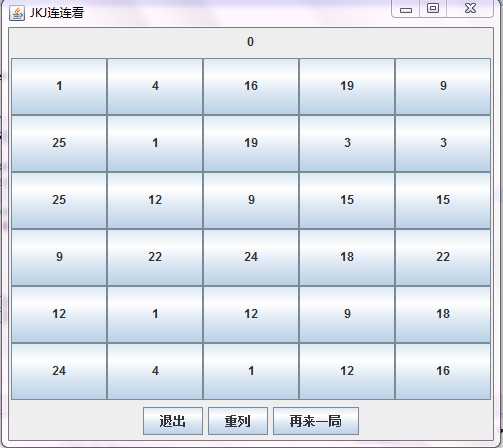

重列的演示:
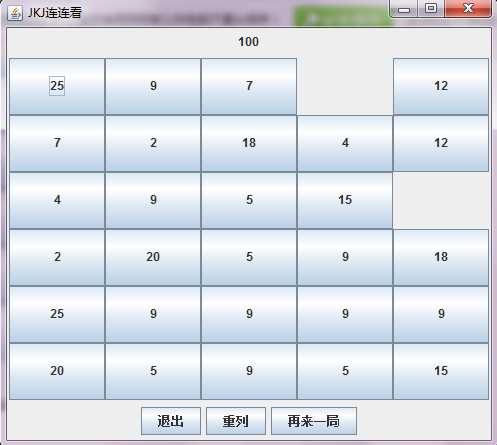
游戏结束:
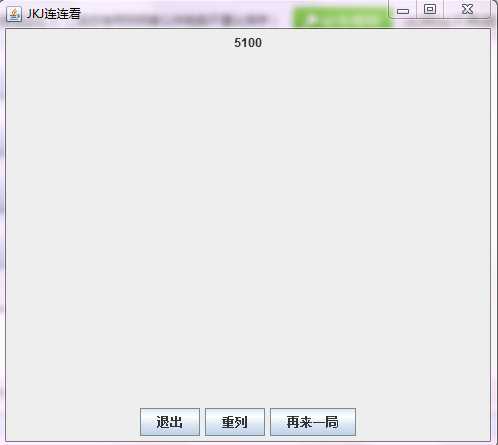
三、遇到的问题及解决方法
1.未能按照要求编写出TDD
解决方法:从网上查阅了资料,并结合上次实验过程,了解了TDD的含义与作用,但是只是停留在了理解的层次,还不能做到自己灵活地编写、运用;
2.未能将在实验楼中编写的代码托管在git中。
解决方案:按照实验楼中对于实验三的要求进行了实际操作,并开通了我的代码库,但是没能真正将代码库用起来。我们还是将结对实践编写的游戏代码写在了自己的eclipse中,没能将其放入代码库进行托管。
四、实验收获
通过这次实验,我首先是学会使用eclipse中source里的format对杂乱无章的代码进行自动排版,使其更具阅读性。同时,在这次实验中,我还了解了许多重构的相关操作,这也为我在以后java的学习过程中提供一定的技巧,显得比较上档次,不会再像刚刚接触java一样,每一个步骤只会按部就班地操作,可能在无形之中也为我节约了一定时间。
我觉得在这次实验中最具有挑战性的就是结对编写小游戏了。我一开始听到这个实验内容时,真心觉得天要塌了。。。但是还好,在我和队友的合作下,我们先从网上找了一些相关代码,并对其进行分段理解。通过努力,我们已经大致掌握了这个游戏原理的精髓。由于我们俩的水平有限,无法对其进行更深层次的修改。经过这次实验,我觉得自己读代码的能力有了一定的提高,但是靠自己编写代码的能力还需要加强,这也激励我在以后学习过程中,要不断学习老师、同学们的编程思想和方式,敢于挑战自我,尝试着自己编写一些有价值的代码。
五、时间统计
|
步骤 |
耗时 |
百分比 |
|
需求分析 |
1h |
16.7% |
|
设计 |
1h | 16.7% |
|
代码实现 |
2h | 33.2% |
|
测试 |
1h | 16.7% |
|
分析总结 |
1h | 16.7% |
标签:
原文地址:http://www.cnblogs.com/wwy-20135116/p/4549741.html